This article is repurposed from our new book, “The Content Marketer’s Guide to Ideation.” This massive 187-page guide is available free as a PDF (get it here), and is also available in Kindle and paperback.
Topics are the content marketer’s entry point to great content. The more topics you have, the more 10X content ideas you can produce.
If you get stuck look for more ideas from the same places, you’ll eventually find yourself grazing over-grazed fields. If you choose a new starting point (i.e. topic(s)), you allow yourself to go down different “idea paths.” So, topics are critical to ideas.

When you have multiple topics, your path to great ideas is easier to traverse
What Is A Topic, Exactly?
Topics are what you write about. Your business can only write about so many topics credibly. Maybe there’s only one. Maybe that’s one big one that could broken down into smaller subtopics. Maybe it’s a small one that could be covered adequately in 5,000 words. Topics give your content strategy a defined purpose. Fully-fleshed out content ideas provide the path.
To be more concrete: a topic is a market of one. It can survive independently, without context. Your audience should have all the context they need when you create content around a topic. Topics, like markets, have demand—someone, somewhere wants to learn about it.
One easy way to visualize topics is to think of a Google Trends trendline. In the example below, “drone training” is clearly a topic, and one that is growing in significance.

Think of a bigger term, like “restaurants.” “Restaurants” isn’t a topic, because you need context to understand who-what-why-where. It’s a noun with a thousand different contexts. It’s probably better understood as a “category.” If you’re Yelp, then “Restaurants in Portland, OR” is a topic.
Content Uses Topics
A fully fleshed-out content idea makes use of a topic. A blog post titled “7 Tips for Steering a Drone” isn’t a topic; the core topic of that idea is “drones” or “drone training.” The headline of a piece of content is the representation of a fully realized content idea.
Topics Aren’t Just Answers
One misconception I see with content marketers is the idea that topics are simply answers to common customer questions, and that you should map all the questions they ask and make those your topics.
The problem with answers-as-topics is that they can be very small and specific. They may not even be deserving of a single piece of content. So, while answers can be great sources of topics, topics are not just answers to questions.
How Big Should a Topic Be?
A good topic can be used to create books, brochures, email campaigns, and more. Think about how you search for information. Would you search for specific information around that topic, or is it too broad? Is the concept so small that there’s little demand around it?
This article is repurposed from our new book, “The Content Marketer’s Guide to Ideation.” This massive 187-page guide is available free as a PDF (get it here), and is also available in Kindle and paperback.
Source Topics From Tools
Building a list of new topics requires a little research time and a few tools. Your goal should be to use as many relevant tools as you need to source new topics, not try to exhaust keyword tools.
Don’t try to capture long-tail keyword variations or “keyword volume” while hunting for topics. Volume, or demand, isn’t important while list building. Start with these tools:
Google Keyword Planner. Still the tried-and-true keyword tool. Google’s bucketing of keywords into Ad Groups can be especially helpful for understanding how the long-tail organizes into larger Topics.
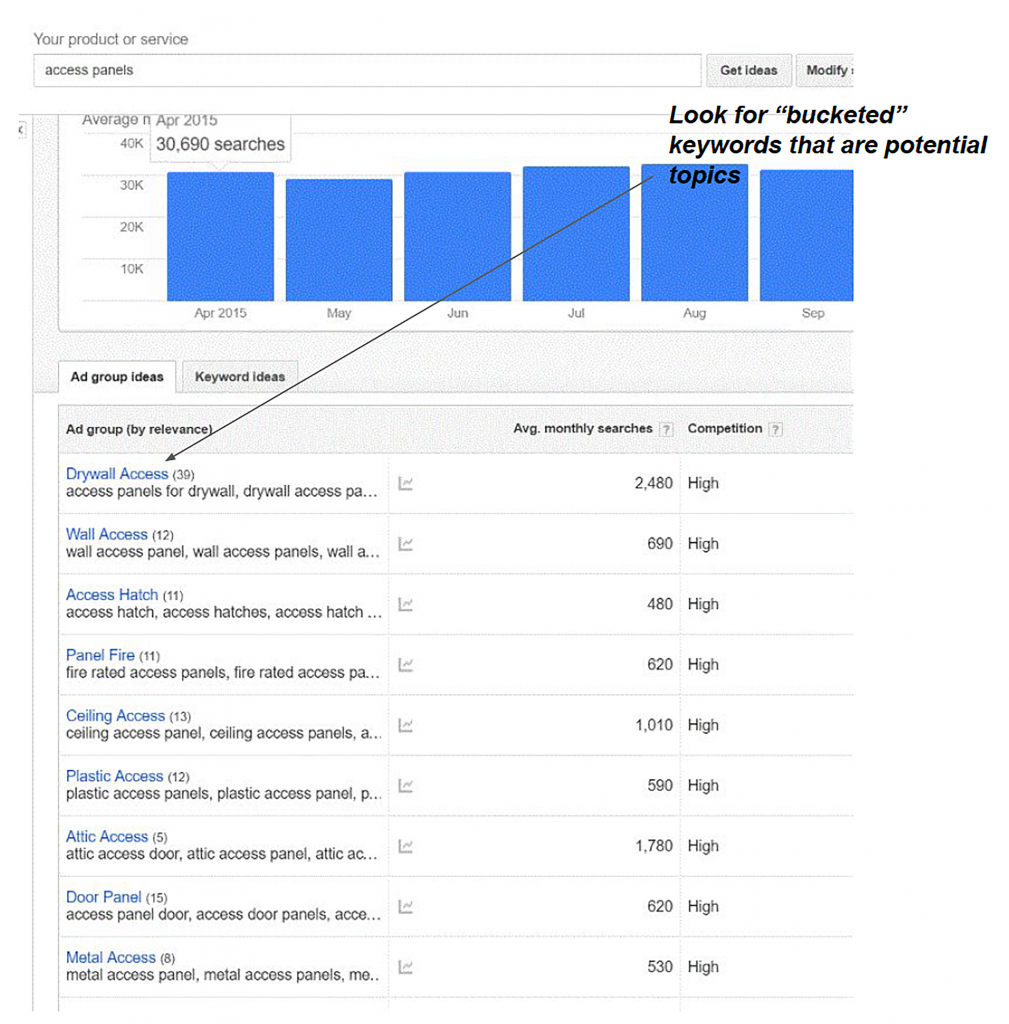
Keywordtool.io. Gives you the ability to search for new topics across Google, YouTube, Bing, and more.
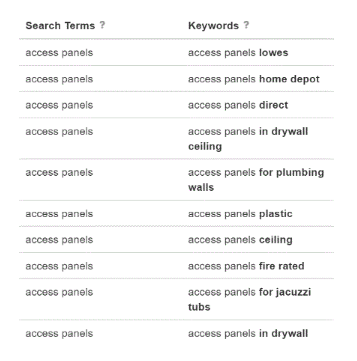
A single topic broken down into many sub-topics
Answer The Public. This visual keyword tool is an incredible source of questions and long-tail keyword variations around a topic.
Wordstream Keyword Niche Finder. Another tool that buckets keywords into topic areas that you can drill down to explore further.
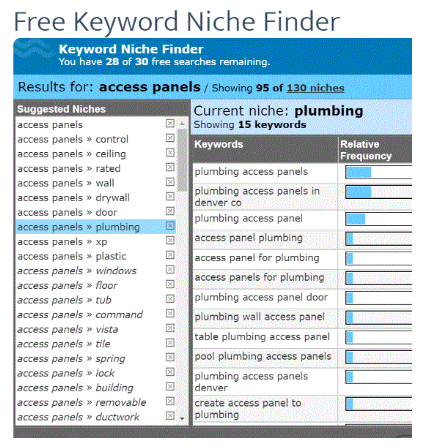
WikiMindMap. Helps you find lateral topics related to your core topics or business problem.

Scrape a Topic Index
Use a tool like FAQFox or Scrapebox to index all of the titles relevant to your niche into one massive spreadsheet. Highlight or document the topics up for consideration.
In FAQFox, choose your keyword carefully, then list sites like Amazon.com and GoodReads.com to pull book titles in the niche. Add your competitor’s’ domain names to find their blog titles and any other industry publications that are relevant to the Topic.
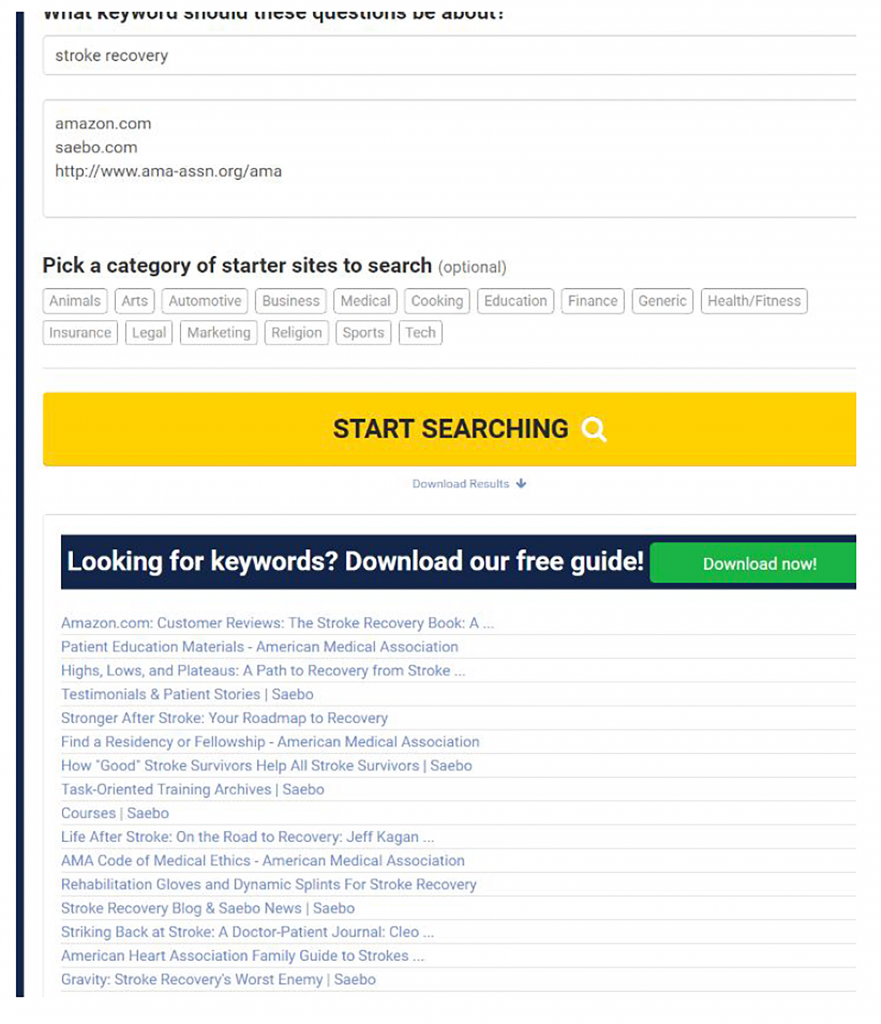
If you don’t find what you’re looking for, look for the table of contents for several highly reviewed books on Amazon’s list. Typically, you can do a Google search for a book title and find a table of contents available on the web. Think about how you could “atomize” the chapters from books.

In Google Trends, type your industry or customer’s occupation into the search bar. Scroll to the bottom and find “related topics” and “related queries.” You can download both widgets as cvs if you want to save off the data.

Compile Your Topic Lists
With a list of topics sourced from keyword and customer insight tools, combined with a scraped topic-index, build out a spreadsheet of all of your findings.
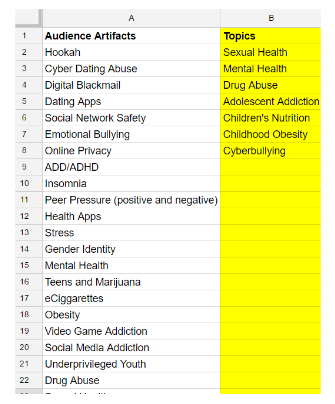
You can “map” those topics into top-of-funnel, middle-of-funnel, bottom-of-funnel for better organization, or you can simply follow the process for choosing the best ideas.
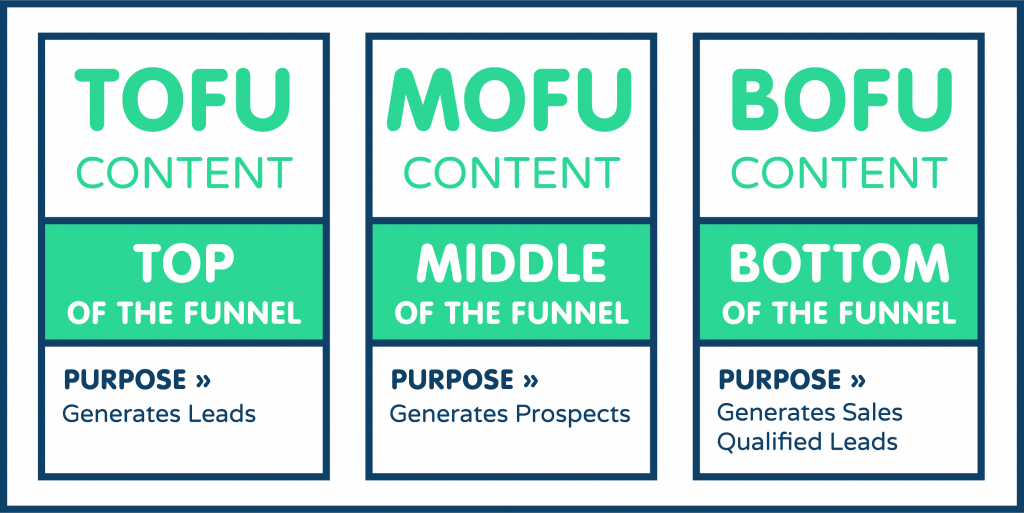
If you’re at a loss for new content ideas, it’s possible that you’re simply lacking topics. Topics are your stepping stone to Ideas. The more topics you have to work with, the more ideas you can create. You don’t necessarily need to broaden the scope of your content strategy; I’m asking you to broaden your thinking. Sometimes, the best topics are just sub-topics of your best topics. All it takes is a little research.
This article is repurposed from our new book, “The Content Marketer’s Guide to Ideation.” This massive 187-page guide is available free as a PDF (get it here), and is also available in Kindle and paperback.






